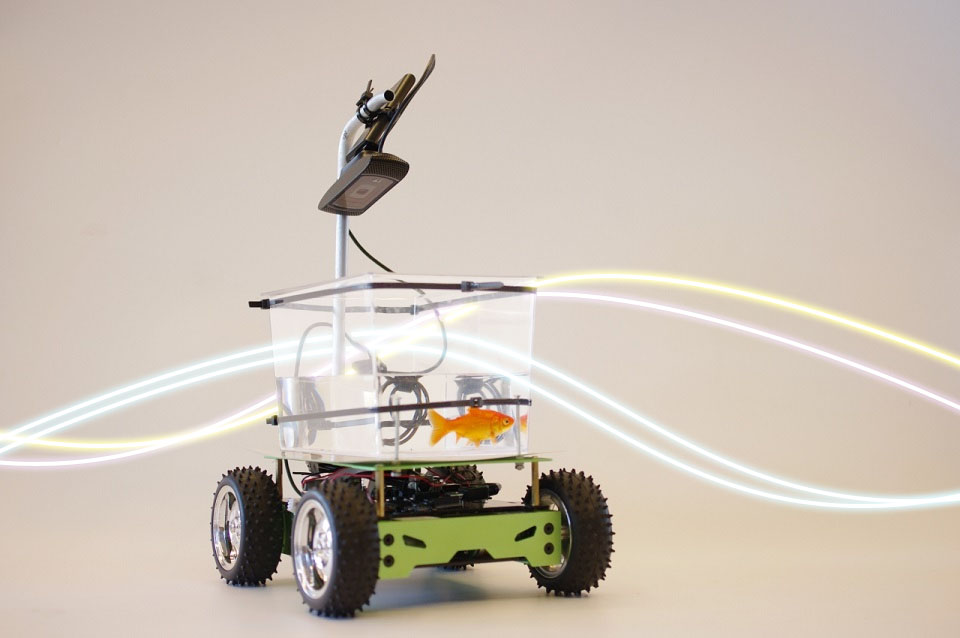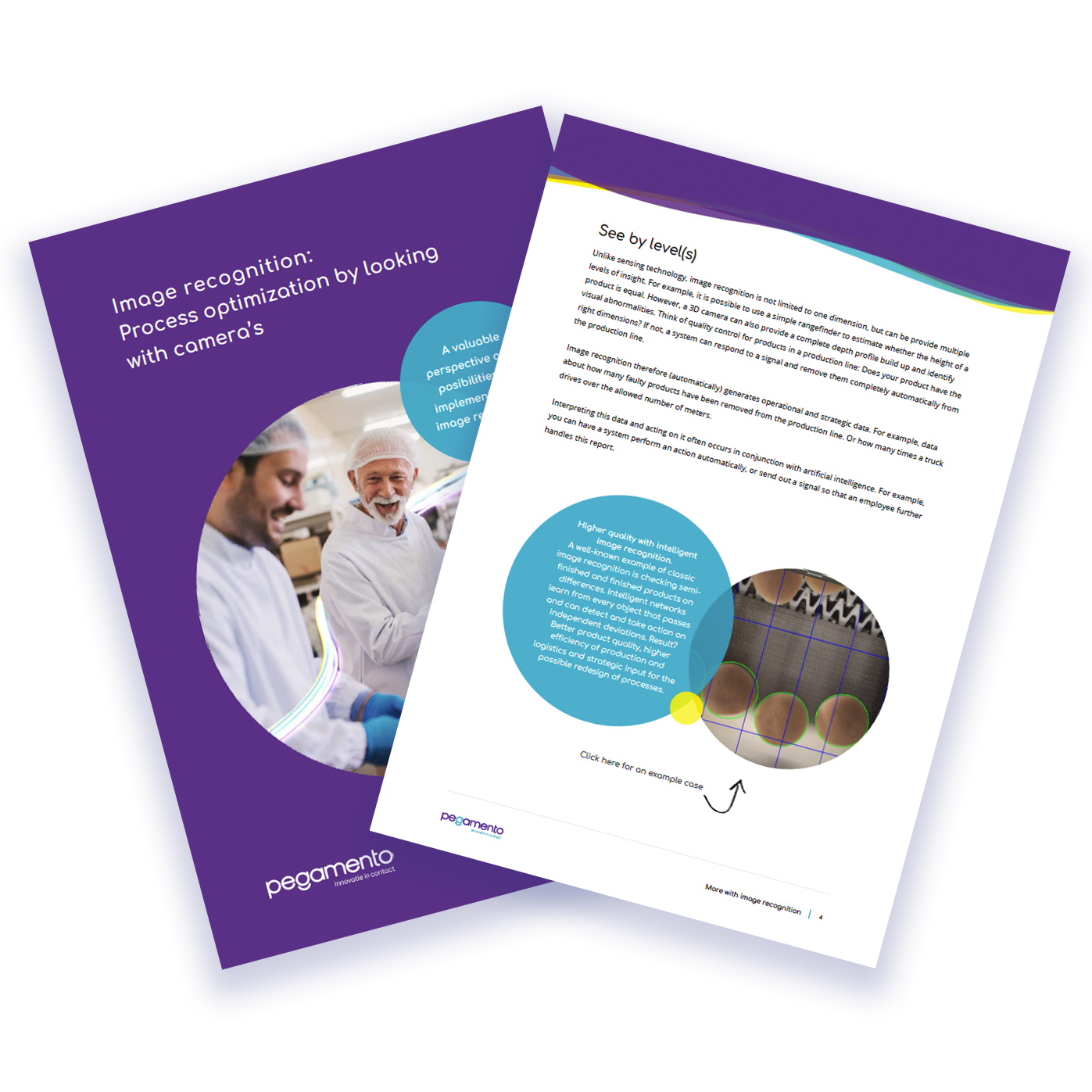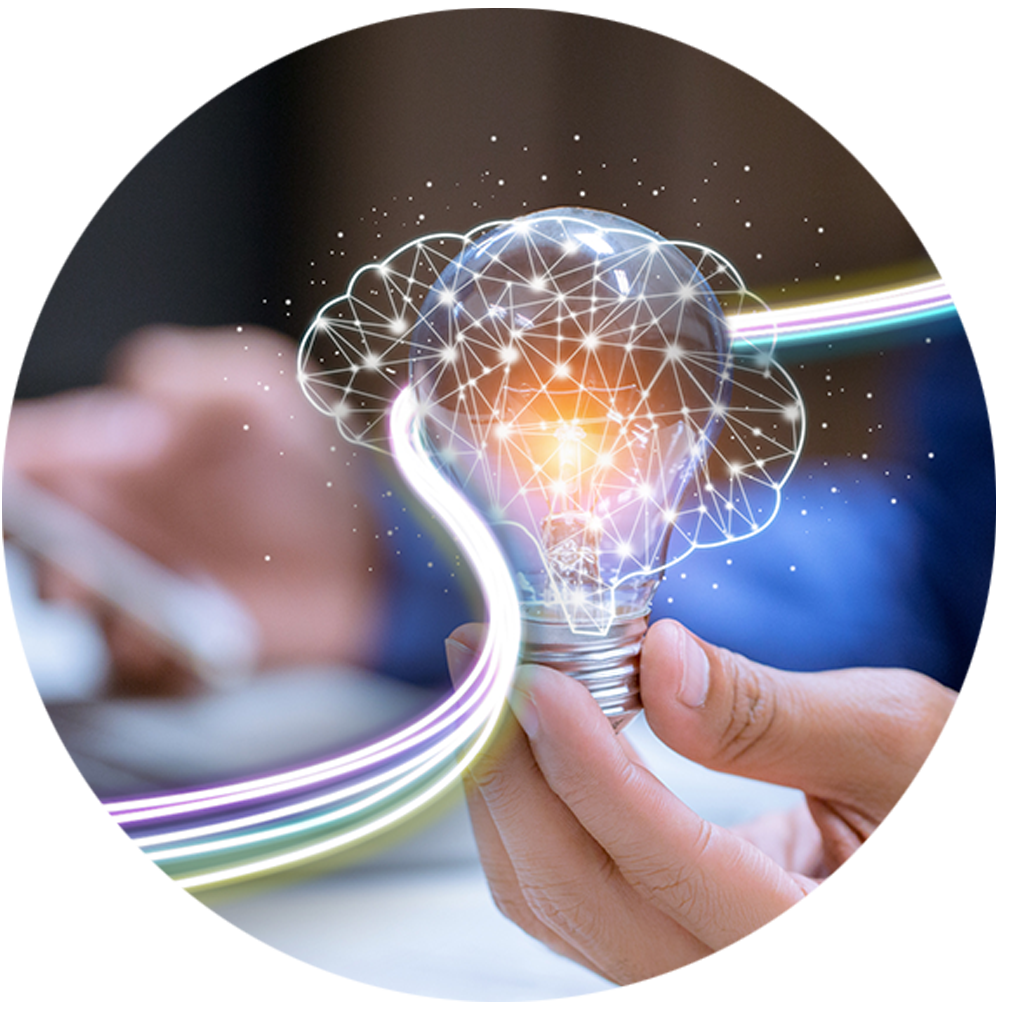Why you don't want to wait with image recognition
Start with image recognition
Could image recognition be applied effectively in your business? You've probably heard about it, but could image recognition be profitable for your business? For example, at 40% cost savings, x number of fewer errors, or increased security within your services?
If you knew the answers, you'd probably want to get started with image recognition right away. But where do you start? Image recognition, also referred to as computer vision, has many advantages, and the possibilities are endless. So naturally you want to know what it can do for your business.
You can discuss this with us without obligation to discover which processes in your company benefit most from image recognition. During your free personal inspiration session, you will also find out from us whether it is worth the investment and where it is best to start.
Feel free to request such a session from us, because it is guaranteed to deliver valuable information. Afterwards, we'll put all the findings from this Inspiration Session into a concise advisory report, so you can take the next step towards image recognition within your organisation.
Discover the opportunities for your business in a personalised inspiration session!
Why start with image recognition?
A camera can see even more than the human eye, and a linked database can store this valuable data. But what concrete benefits does it provide? These are some of the many advantages of image recognition:
Chances for your business!
You may already see opportunities for your business, but it is possible that much more can be achieved with image recognition. Therefore, it is a good idea to opt for a personal inspiration session with one of our specialists. Together with you, they will look at the feasible options and take you through the possibilities step by step. This will give you a quick indication of what image recognition can offer you. The 90 minutes you spend in the session are guaranteed to be valuable. For now, that is your only 'investment'. We know from experience that the return on the inspiration session and the advisory report will be surprisingly high.
Image recognition: what is it, exactly, and should I use it?
You've heard of it, but what use is it within your company? Does it affect privacy? And is it limited to facial recognition only? There are usually also many more questions, facts, and fables. As a result, you likely want more insight into and background information on image recognition. We therefore have this e-book for you: Image recognition for dummies.
Fill in your email address below and we'll send it to you.
Often, companies delay the transition to image recognition because they are concerned about the cost or complexity of the implementation process. The result is a missed opportunity. These are the reasons why you want to start using image recognition right away:
Image recognition focuses on direct process improvement
Deploying image recognition within your organisation offers immediate results. In the long-term, it can lead to cost savings, less down-time, more efficiency, and increased security. In addition, deploying image recognition keeps an extra eye on your processes and/or services. This opens up a world of possibilities for you.
Image recognition need not have a direct impact on your existing structures and staff
An image recognition system can work with the output of existing IT infrastructure and employees. When we implement image recognition within your organisation, we look at existing human and other resources and develop a solution that fits perfectly within this context entirely according to your needs.
You instantly collect a vast quantity of valuable data
When using image recognition, you (automatically) generate a vast quantity of valuable data. This data can be further analysed to optimise your production process/service in terms of efficiency, safety, or accuracy, for example. Therefore, the earlier you start, the more data you generate, and the faster you can optimise.
How do I start with the implementation of image recognition?
Aim to gradually convince yourself and your company of the power of image recognition. Use these tips to give image recognition the best chance of success within your organisation:
Tip 1: be informed
The possibilities of image recognition are endless. Because we are specialists in the field of image recognition, we have extensive experience in developing solution-oriented applications within various industries. If a camera can be used, we can develop a solution with it. Let us inform you about the possibilities.
Tip 2: start where the impact is greatest
You can deploy image recognition precisely where it adds value. This is a big advantage, because this way you never have to buy in bulk.
Tip 3: implement image recognition gradually
Don't immediately burden your entire organisation with something that is still intangible. This causes anxiety among employees, who wonder, 'What does it mean for me and my job?' Start with one process, for example. Give people time to get used to it and they might come up with their own ideas of what image recognition could handle in future.
“Whatever applies to your business, our advisory report contains some concrete follow-up steps. Convenient, because that way you can get started with image recognition right away!”
Wondering how and where you can best get started with image recognition?
Register now for a personal inspiration session. Our specialists will quickly give you insight!
How does it work?
During this personal inspiration session, we will brainstorm together to find out which processes in your organisation would benefit most from image recognition. We'll also look at the impact on your business and suggest the best place to start.
When?
We arrange an appointment at a time that suits you. The meeting can take place at your office, at our office, or online.
What does it cost?
This personal inspiration session is free of charge and without obligation.



